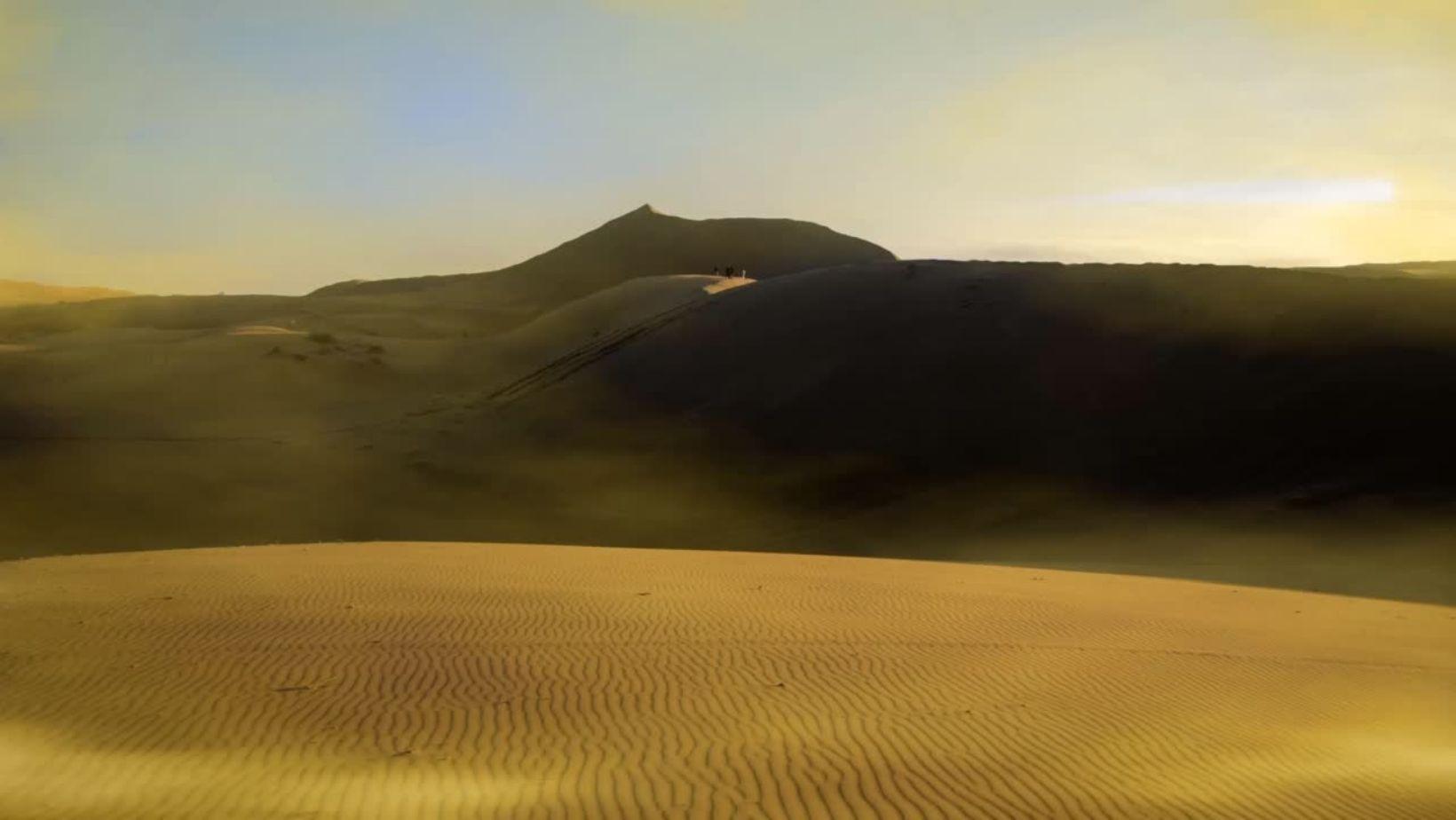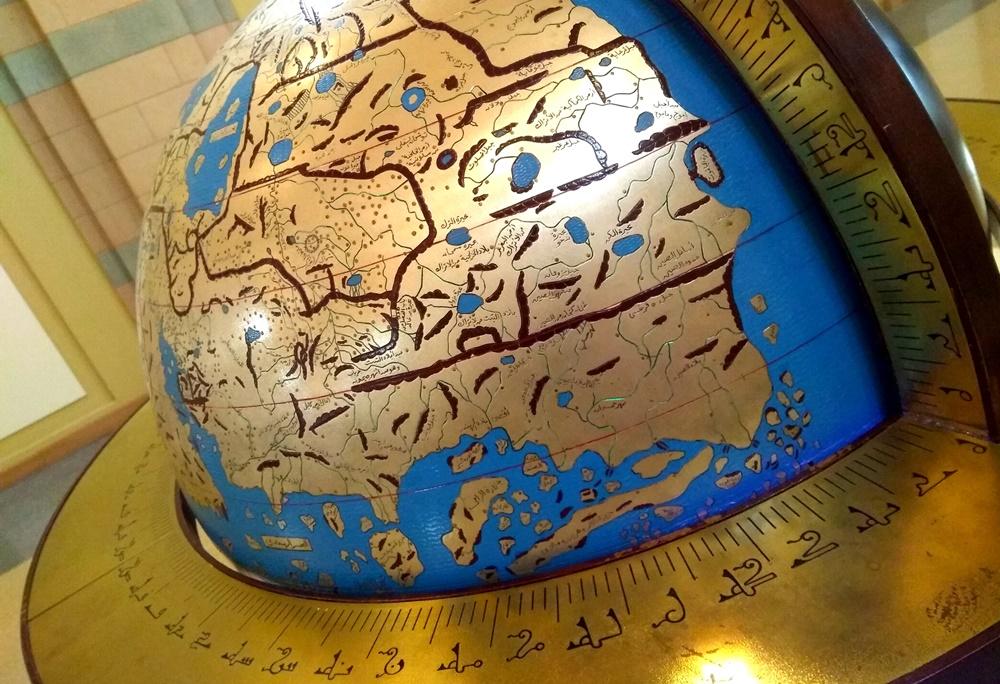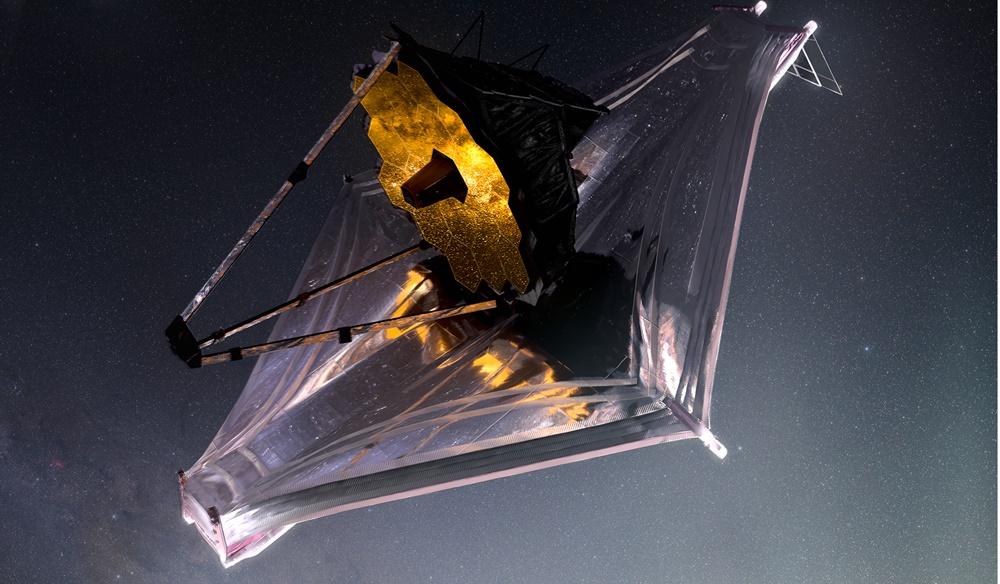QUR’ANIC MIRACLE:
Scientific discovery of a city buried in Rub al-Khali (Empty Quarter)
SAND and only sand for thousands of kilometers extending over four nations, Rub al-Khali or the Empty Quarter is the world’s largest sand desert covering parts of Saudi Arabia, the UAE, Oman and Yemen. Uninhabited one may think but the Bedu tribes have survived on the edge since before recorded time.
Sand dunes reach as high as 250 meters, while billions of glittering stars light up its night sky – a feat hikers and campers don’t like to miss. Formidable conditions – extremely high temperature and dry as a bone – have kept travelers and settlers far away.
To say this place was once luscious green, with lakes and ponds and springs, chirping birds, grazing deer, sleeping water buffaloes, and of course humans would be an unbelievable myth. Yet it’s all true – facts are stranger than fiction.
According to myth, Ubar was a sumptuously rich city, grown fat from the frankincense trade. Said to have been destroyed as punishment for its inhabitants’ impiety, the city remained elusive for centuries. – National Geographic
Much has been written about this Quarter. Archeologists and geologists have found remains of thousands of lakes (in two periods: between 37,000 and 17,000 years ago and between 10,000 and 5,000 years ago), fossils of cattle and hippos, and of flint tools including knives, scrapers, borers and arrowheads. The mission, the hard work, and the use of technology by scientists to uncover details have all been documented in chronology.
This piece is about the people who inhabited a part of the area. Who were they and what happened to them?
The People Who Once Lived Here
National Geographic reports:
“In 1932 Bertram Thomas recorded Bedouin tales of a fabled trading city that disappeared beneath the sands of the Empty Quarter, beginning a love affair between Western explorers and the ancient city of Ubar. According to myth, Ubar was a sumptuously rich city, grown fat from the frankincense trade. Said to have been destroyed as punishment for its inhabitants’ impiety, the city remained elusive for centuries.” [1]
How much of a myth were these stories?
“Did you not see how your Lord dealt with Aad? Iram (the city) of the pillars, the like of which were not created in the land?” (Qur’an, 89:6-8)
The people of Aad lived in an area between Yemen and Oman.[2] Iram “refers to the House of the kingdom of Aad” as mentioned by early scholars like Qatadah and As-Suddi. [3]
The Qur’an additionally speaks “of the pillars” because they lived in trellised houses that were raised with firm pillars. [4]
“Do you build high palaces on every high place, while you do not live in them? And do you get for yourselves palaces (fine buildings) as if you will live therein forever?” (Qur’an, 26:128-129)
The National Geographic article continues:
“It wasn’t until 1992, after decades of fruitless exploration, that scientists finally made headway. Using space-based radar imagery, they detected ancient caravan tracks that converged near modern-day Shisr in southwest Oman. Their excavations uncovered a large octagonal fortress with thick walls standing ten feet (three meters) high, along with eight towers at its corners. Greek, Roman, and Syrian pottery shards discovered in the ruins – the oldest dating from 4,000 years ago – suggested the site was indeed an important trading center. The fact that the city seemed to have met with a rather cataclysmic end – much of it fell into a sinkhole created by the collapse of an underground limestone cavern – was compelling evidence to suggest that this was indeed the fabled city of Ubar.” [5]
Subhan Allah, the evidence even points to the punishment that befell the people. How accurate is the Qur’an! And why not when it is the Lord of the Worlds who is informing us about the people of the past.
The Exact Word ‘Iram’ Found in Excavations
Researchers found in the library of Ebla a record of all of the cities with which Ebla had business ties. On the list was the specific name of the city of “Iram.”
More evidence of Iram is found in the December 1978 edition of National Geographic magazine. In 1973, the city of Ebla was excavated in Syria. The city was discovered to be 4,300 years old. Researchers found in the library of Ebla a record of all of the cities with which Ebla had business ties. On the list was the specific name of the city of “Iram.” The people of Ebla had apparently conducted business with the people of “Iram.”
These fascinating details hint at yet another (among the infinite) proof of the divinity of the Qur’an. Presenting such precise details of a people who lived thousands of years before the advent of Prophet Muhammad (peace be upon him) is humanly impossible during a time of little scientific advancement.
Leaving aside these intriguing details, let’s come back to our original question: Who were these people? We must know that the Qur’an is not a book of history or science. It does have many signs for people to believe in it – historic, scientific, literary, etc. – but its primary purpose is to guide humanity.
The People of Aad
The story of Aad is one for our guidance. Aad were the strongest people of their time in their physical stature, and were the mightiest in power. But they were rebellious, arrogant, and disobedient tyrants. They worshiped false gods besides Allah. They abused the blessings and power they had, and they spread corruption on earth.
“As for Aad, they were arrogant in the land without right, and they said: “Who is mightier than us in strength?” See they not that Allah Who created them was mightier in strength than them. And they used to deny Our verses!” (Qur’an, 41:15)
As with every disbelieving nation in the past, Allah first sent a prophet to the people to remind them and call them back towards righteousness.
Aad denied the Messengers. When their brother Hud said to them:
“Will you not fear Allah and obey Him? Verily, I am a trustworthy Messenger to you. So fear Allah, keep your duty to Him, and obey me. No reward do I ask of you for it; my reward is only from the Lord of the Universe.
“Do you build high palaces on every high place, while you do not live in them? And do you get for yourselves palaces (fine buildings) as if you will live therein forever? “And when you seize (somebody), seize you (him) as tyrants?
“So fear Allah, keep your duty to Him, and obey me. And keep your duty to Him, fear Him Who has aided you with all (good things) that you know. He has aided you with cattle and children. And gardens and springs. Verily, I fear for you the torment of a Great Day.”
They said: “It is the same to us whether you preach or be not of those who preach. This is no other than the false tales and religion of the ancients. And we are not going to be punished.” So they denied him, and We destroyed them. Verily, in this is indeed a sign, yet most of them are not believers. (Qur’an, 26:123-139)
How were they destroyed?
And as for Aad, – they were destroyed by a furious violent wind which Allah imposed on them for seven nights and eight days in succession, so that you could see men lying overthrown (destroyed), as if they were hollow trunks of date palms! Do you see any remnants of them? (Qur’an, 69:6-8)
For seven nights and eight days continuously they were battered with a cold, violent wind. Was it a massive cyclone or a turbulent wind carrying tons of sand? We don’t know. Its magnitude and nature may not be known to us, but we know it was severe and it rooted out these people. Only Prophet Hud and the believers were saved. They migrated to Hadramout in Yemen and settled there.
Remarkable Fact About Their Remains
The last verse is quite interesting: “Do you see any remnants of them?” Which means, as Ibn Kathir said, “Do you find any one of them left or anyone who even attributes himself to being from them?” This is the obvious meaning.
However, there’s one remarkable fact. Retired Aramco geologist Hal McClure, who in his 1984 doctoral thesis at London University reported in detail on the lakes, says there are no fossil remains of humans there. “Absolutely none” have been found at the lake, he said, though explorers have found flint tools, including knives, scrapers, borers and arrowheads.[6]
“Do you see any remnants of them?” The verse is absolutely right even if there were fossils because there are no people of Aad living today. But could it also mean they were destroyed without a trace left behind?
So if you happen to visit the Empty Quarter, enjoying the calm desert and the glittering night sky, let’s remember how it was once a trading center, with gardens and gushing springs, inhabited by a powerful and rich civilization, but who made life hell on earth and rebelled against God.
Let’s remember how an entire city lies buried beneath the sand we’re camping upon.
[1] National Geographic Magazine
[2] Ibn Kathir, Stories of the Qur’an
[3] Tafsir Ibn Kathir (abridged), English translation, vol. 10, p. 472, Darussalam
[4] Ibid., p. 471
[5] Op. Cit.
[6] Arthur Clark, Lakes of Rub al-Khali, pp. 28-33 of the May/June 1989 print edition of Saudi Aramco World.
Limited free articles. Subscribe for full access.







 Dr. Bilal Philips
Dr. Bilal Philips